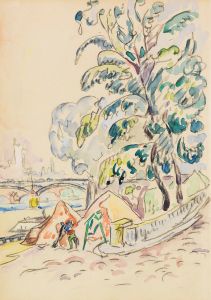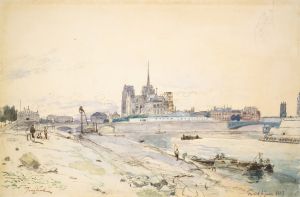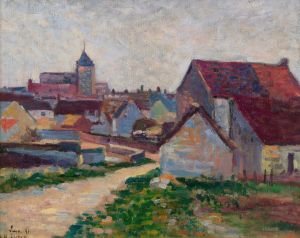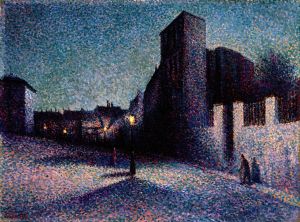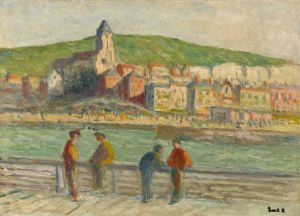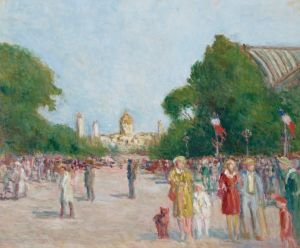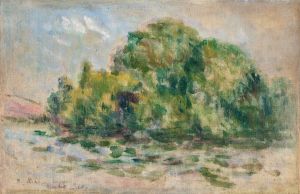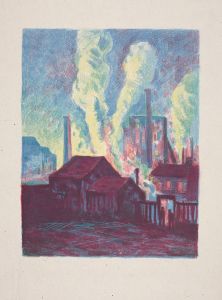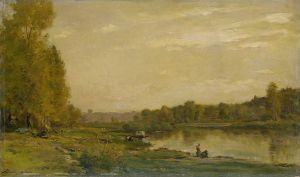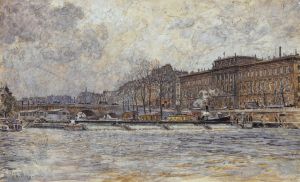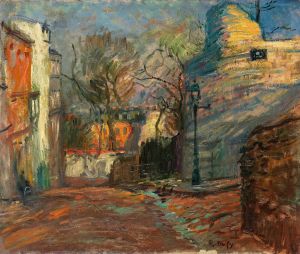
Paysage parisien. Bords de Seine
A hand-painted replica of Maximilien Luce’s masterpiece Paysage parisien. Bords de Seine, meticulously crafted by professional artists to capture the true essence of the original. Each piece is created with museum-quality canvas and rare mineral pigments, carefully painted by experienced artists with delicate brushstrokes and rich, layered colors to perfectly recreate the texture of the original artwork. Unlike machine-printed reproductions, this hand-painted version brings the painting to life, infused with the artist’s emotions and skill in every stroke. Whether for personal collection or home decoration, it instantly elevates the artistic atmosphere of any space.
Maximilien Luce was a French Neo-Impressionist artist known for his paintings, illustrations, and engravings. Born on March 13, 1858, in Paris, Luce became an influential figure in the Neo-Impressionist movement, which was characterized by the use of pointillism—a technique involving the application of small, distinct dots of color to form an image. Luce's works often depicted urban and rural scenes, capturing the essence of late 19th and early 20th-century France.
One of Luce's notable works is "Paysage parisien. Bords de Seine," which translates to "Parisian Landscape. Banks of the Seine." This painting exemplifies Luce's skill in capturing the interplay of light and color, a hallmark of the Neo-Impressionist style. The painting depicts a serene view of the Seine River, which flows through the heart of Paris, a city that has inspired countless artists over the centuries.
In "Paysage parisien. Bords de Seine," Luce employs the pointillist technique to render the scene with vibrant colors and dynamic light effects. The painting captures the tranquil atmosphere of the riverbanks, with the water reflecting the sky and surrounding landscape. The use of small, precise brushstrokes creates a sense of movement and liveliness, inviting viewers to experience the scene as if they were standing on the riverbank themselves.
Luce's choice of subject matter reflects his interest in everyday life and the natural beauty of the world around him. The Seine River, a central feature of Paris, has long been a source of inspiration for artists, serving as a backdrop for both the bustling activity of the city and the peacefulness of nature. In this painting, Luce captures the duality of the Seine, highlighting its role as both a vital artery of the city and a tranquil escape from urban life.
Throughout his career, Luce was associated with several prominent artists and movements. He was a close friend of Camille Pissarro, another leading figure in the Neo-Impressionist movement, and was influenced by the works of Georges Seurat and Paul Signac. Luce's commitment to social and political causes also informed his art, as he often depicted scenes of working-class life and social struggle.
"Paysage parisien. Bords de Seine" is a testament to Luce's mastery of color and light, as well as his ability to convey the beauty and complexity of the world around him. The painting remains an important example of Neo-Impressionism and continues to be appreciated for its artistic and historical significance.
Maximilien Luce's contributions to the art world extend beyond his paintings. He was also an accomplished engraver and illustrator, producing works that reflected his keen observation of society and his commitment to social justice. Luce's legacy is preserved in numerous museums and collections around the world, where his works continue to inspire and captivate audiences.
In summary, "Paysage parisien. Bords de Seine" by Maximilien Luce is a quintessential example of Neo-Impressionist art, showcasing the artist's skillful use of color and light to depict a serene scene along the Seine River. Through this painting, Luce invites viewers to appreciate the beauty of everyday life and the natural world, while also reflecting on the broader social and cultural context of his time.





